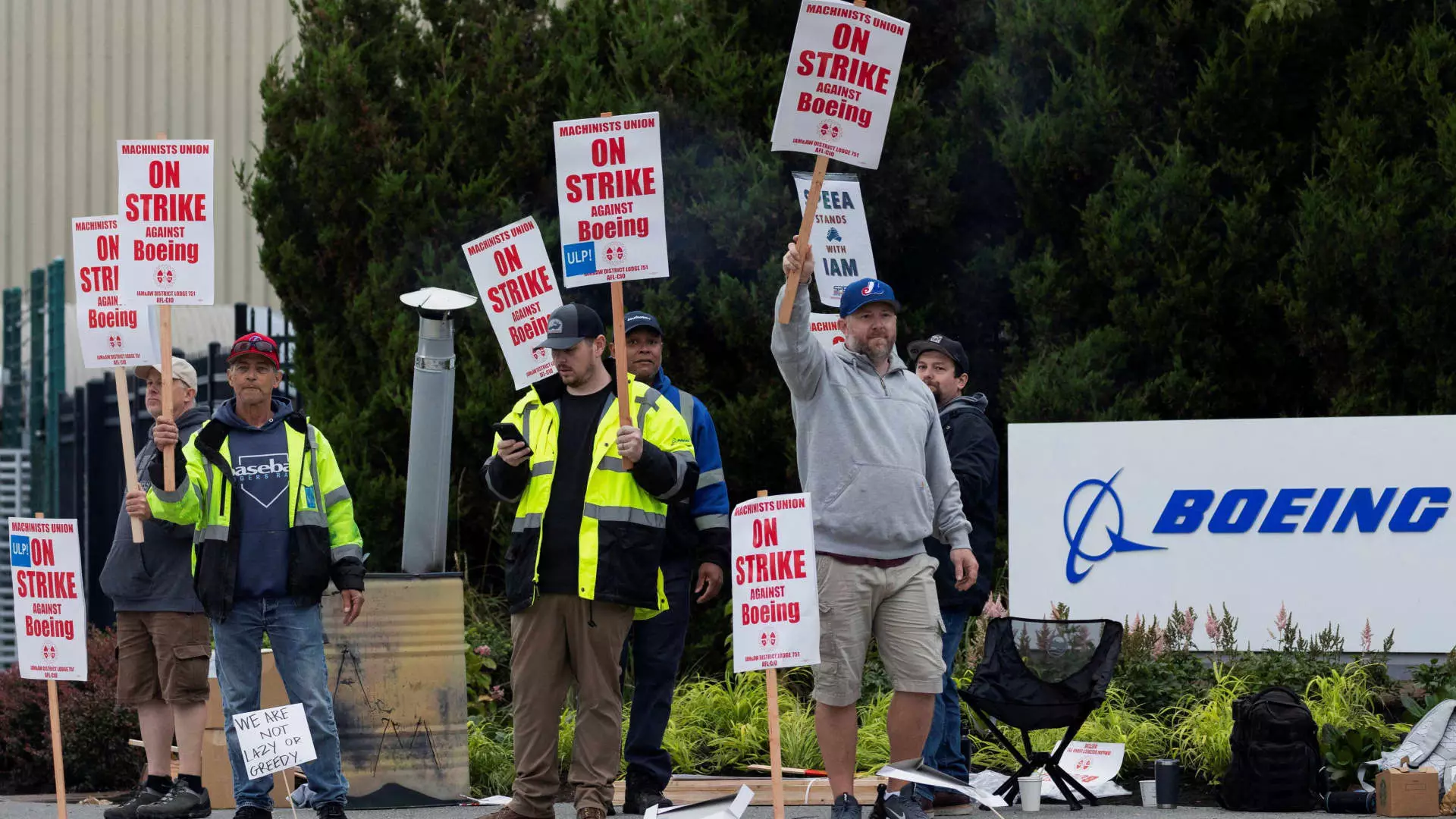In the midst of turbulent economic conditions, Boeing, the aerospace giant based in Renton, Washington, finds itself engulfed in an escalating strike led by machinists advocating for better wages. As of mid-September 2023, over 30,000 machinists walked off the job, signaling a robust alliance among workers in the face of substantial company mismanagement and dwindling profits. This labor action not only represents a fundamental struggle for fair compensation within the industry but also poses a serious threat to Boeing’s financial standing, which is already precarious with $60 billion in debt.
The ramifications of this strike extend far beyond the immediate scope of wage negotiations. Financial analysts estimate the strike could be costing Boeing upwards of $50 million a day, a staggering figure that reflects both lost production and the potential downgrading of the company’s credit by major rating agencies. Such a downgrade could escalate Boeing’s borrowing costs, placing further strain on an organization that has failed to turn a profit since 2018, culminating in a loss of approximately $8 billion in 2023 alone. The ongoing strike not only knocks Boeing’s operational capacity but also reverberates throughout its extensive network of suppliers, some of which have already halted shipments as production grinds to a halt.
At the heart of the situation lies the machinists themselves, who are not just fighting for better pay—they are wrestling with the harsh realities of life in an ever-increasing cost-of-living environment. Workers have shared how they are required to supplement their incomes with side jobs ranging from landscaping to furniture moving just to make ends meet. Their plight is indicative of a broader issue plaguing many working-class Americans, where stagnant wages do not align with the increasing cost of living; the median home price in Washington state has soared by over 142% in a decade, causing many like Jake Meyer to concede that home ownership seems out of reach.
Aside from the financial concerns, there is an emotional attachment to their jobs. Workers express pride in their craftsmanship as they assemble Boeing’s renowned aircraft, and believe that their deep-seated dedication deserves to be met with appropriate compensation. This juxtaposition between personal fulfillment and financial hardship highlights the cultural significance of labor in America, especially in an industry distinguished by complexity and expertise. The stories shared by machinists serve as a poignant reminder of the human cost of corporate decisions and the pressing need for fair labor practices.
Table negotiations between Boeing and the International Association of Machinists and Aerospace Workers District 751 have marked an ongoing struggle with little apparent progress. Workers are advocating for salary increases of approximately 40%, significantly higher than Boeing’s latest offer of a 25% raise over a four-year span. Moreover, machinists are pushing for the restoration of pensions lost over a decade ago, marking this labor dispute as more than just an economic scuffle; it symbolizes a demand for respect and acknowledgment of the workers’ contribution to the company’s success.
As the new Boeing CEO, Kelly Ortberg, endeavors to restore confidence in the company, he is simultaneously faced with mounting public scrutiny and internal distress. Amidst the strike, Ortberg has announced temporary furloughs for tens of thousands of staff, a move that raises concerns about long-term employee retention, especially given the specific technical skills required in aerospace manufacturing. The strategic decisions made in critical moments such as these can either fortify Boeing’s workforce or alienate it further in an already tight labor market.
Boeing’s strike is just one case within a broader tapestry of labor movements emerging across the United States. Recent years have seen a resurgence in labor actions spanning multiple industries—including automotive, film, and the service sector—underlining a growing discontent with wage stagnation and deteriorating working conditions. The federal government, acknowledging the importance of these negotiations, has encouraged both Boeing and the union to find a resolution that promotes worker welfare while simultaneously addressing the company’s long-term viability.
In this context, it is critical to recognize that the battle for fair wages at Boeing is emblematic of a larger fight in America—a confrontation between corporate profits and the livelihoods of hardworking individuals. As discussions progress in the ongoing strike, the ultimate outcome will likely resonate beyond Boeing, influencing labor relations across diverse sectors.
The ongoing machinists’ strike presents a formidable challenge for Boeing, demanding urgent attention to workers’ needs amidst pressing financial hardships. As both sides navigate this contentious relationship, the outcome will not only impact the future of the company but could also shape the landscape of labor relations in the U.S. The coming weeks will reveal whether Boeing will engage in meaningful negotiations that honor its employees or if a prolonged standoff will further harm both the company’s bottom line and the lives of its dedicated workforce. In an era where skilled labor is increasingly scarce, the resolution of this strike may set a precedent for labor rights across the nation.

